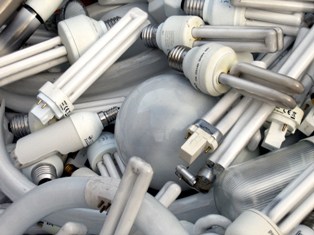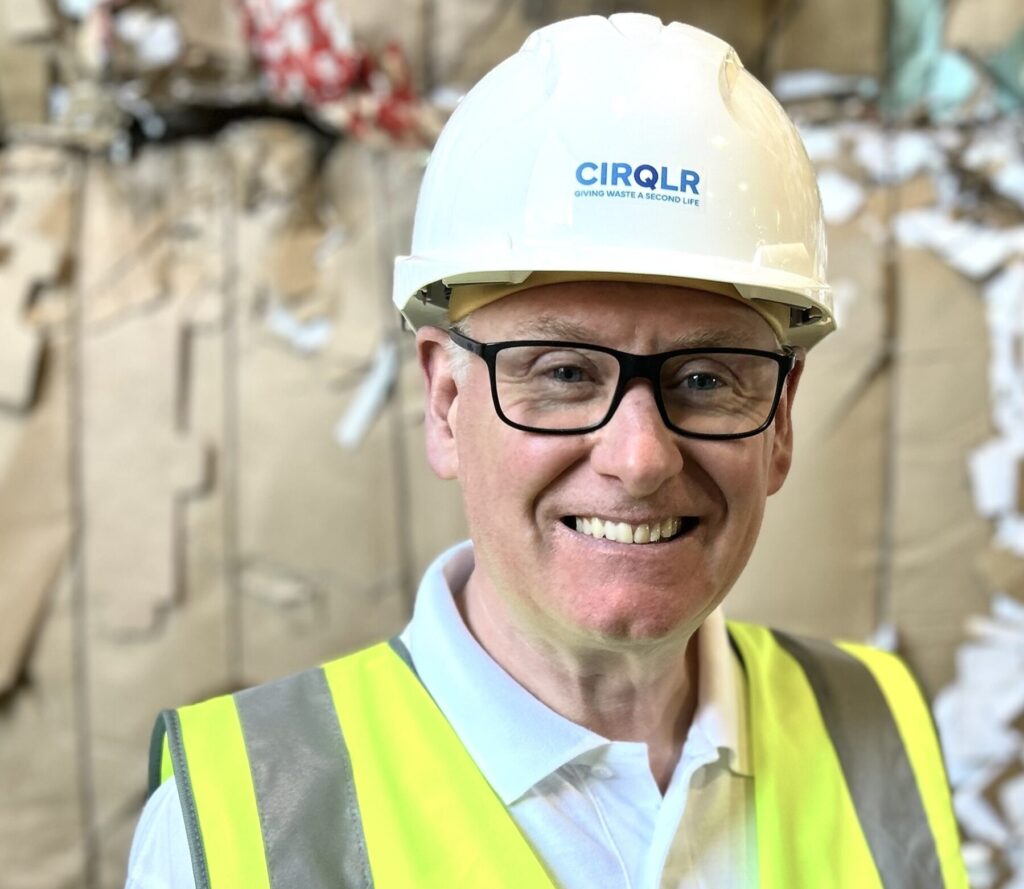Our wasteful economy needs to change. A new economic model needs new business models. New business models need a new procurement strategy and a new relationship between producers and purchasers and a move from ownership to usership.
Sustainable procurement has developed over the last ten years or so to provide a framework to help procurers purchase products that are deemed ‘sustainable’. Sustainable procurement is defined as a process whereby organisations meet their needs for goods and services in a way that achieves value for money on a whole life basis in terms of generating benefits to the organisation, society and the economy, whilst minimising damage to the environment. I have found that in practice the majority of sustainable procurement exercises have a very restricted view of sustainability and do not go beyond basic environmental compliance, with very few examples exploring the ‘whole life costing’ of a product. In addition, most sustainable procurement exercises are based on the purchase of goods and services through a linear approach, meaning repair, re-use, refurbish, remanufacture and recycling opportunities are rarely considered.

Circular procurement looks at the whole life of a product or service. It provides the opportunity to carry out a fundamental review of the products and services an organisation buys and uses. Done properly it can challenge the way in which an organisation uses and consumes products and materials, and introduces a framework to assess buying decisions in accordance with circular economy principles. Circular procurement provides the opportunity to influence so much more than basic compliance with national or international sustainability standards.
The scale of the opportunity
The public sector has a significant role to play in driving demand for products and services from organisations implementing the principles of the circular economy. Public spending, which accounts for an average of 12% of GDP in OECD [source: UNEP] countries, and up to 30% in developing countries, wields enormous purchasing power. Public sector spending on goods and services across the UK is in excess of £200 billion per year [source: NAO].
Shifting that spending towards more sustainable goods and services can help drive markets in the direction of innovation and sustainability, thereby enabling the transition to a green economy. It can support the development of innovative circular business models as opposed to supporting the inefficient linear models.
From linear to circular procurement
Circular procurement introduces a change from a traditional public procurement process, based on product-selling business models, to a more service-oriented system which challenges the need of ownership. It can also introduce the life cycle of the product by integrating ‘use’ and ‘disposal’ within the scope of procurement. For example, by paying only for the services used (pay per use), or by making specific agreements regarding the return (buy back), you can ensure that resources are optimally re-used. Contrary to popular belief ‘circular procurement’ need not lead to higher costs, as long as both the buyer as well as the supplier take all long-term costs and values into account.
However, circular procurement should not simply look at ownership and usership but detail a framework to include technical and non-technical specifications of product/service combinations that improve resource efficiency through prevention, recovery, re-use and recycling. For example, specifying products with a recycled content, products that are repairable or products that can be easily dismantled and recycled at end of life.
The challenge is that adopting more circular solutions needs evidence – the ‘whole life costing’ of a product or service needs to be assessed and unless previous studies have been done to provide this evidence, it can be difficult for a supplier to demonstrate that their circular solution has a lower environmental impact than a more conventional linear solution. Collaboration is so important to help provide this evidence base and drive the implementation of new business models. Where the procurer and the service provider work together to develop a successful solution, to work through any issues and to capture data to evidence the benefits of the new approach.

Even if the evidence was available there is a lack of skills around how to include circular principles within the procurement process. The reality is that there is a lack of business models with the necessary ‘whole life’ sustainability evidence and a procurement system that is very inexperienced in procuring innovative new business models. Collaboration is needed to share the risk and overcome this inertia.
Collaboration – a new relationship between procurer and supplier
According to the UK Government’s Crown Commercial Services (CCS) the over-riding procurement policy requirement is that all public procurement must be based on value for money, defined as “the best mix of quality and effectiveness for the least outlay over the period of use of the goods or services bought”. This should be achieved through competition, unless there are compelling reasons to the contrary. There are two key points to raise here:
- the fact that the price element is to be measured over the life of the product is very sensible but rarely done, as ‘whole life costing’ is generally poorly understood across the public sector and so not implemented, meaning that the lowest price remains a dominant factor in the majority of procurement exercises; and
- the element of competition can stifle collaboration as procurers and suppliers are unable to engage and share information once a tender has been issued.
Collaboration works by sharing different perspectives, knowledge and approaches to solve problems while at the same time offering benefits to all stakeholders involved in the process.
In this case, the main object of the negotiation between supplier and procurer switches from product-oriented to service-oriented, thus switching from a price per product unit to price per service unit. This is what is referred to as ‘servitisation’, which is an important circular business model as it helps close loops and improve resource efficiencies through recovery – ownership is retained by the service provider who is able to refurbish, repair and maintain the life of the product.
A leasing model for lighting
A good example of a servitisation model was a recent project I led to develop a leased lighting business model on behalf of Zero Waste Scotland. In this model, customers would not purchase or own the light fixtures and fittings outright; instead the supplier would supply, install and maintain the lights, and retain ownership. In effect, the customer would be renting or leasing the light.

To deliver the work we undertook an assessment exercise to identify suitable finance options for a “leasing” business model. As well as engaging finance providers to understand their commercial lending requirements, it was necessary to take into account a number of operational and practical issues including: product life-time and operating hours, lease lengths, ownership of assets, lease extensions and warranty periods.
As a result of the work a new business model was successfully developed where suitable finance partners were identified, a detailed lease finance model was produced and legal agreements between the finance provider, customer and supplier were prepared. It is interesting to note that similar lease finance based business models may also be suitable for the promotion of other environmentally efficient building services equipment such as Building Energy Management Systems (BEMS), fire systems and heating.
Circular procurement supports the shift from the technical specifications being written in isolation by the procurer to a more collaborative discussion on, and definition of, the proposed technical and non-technical specifications between the supplier and procurer. In effect by taking a longer-term view of the procurement process and also by assessing the ‘whole life costing’ of a product or service, it is possible to challenge more conventional buying decisions to ones that offer more circular solutions. So taking the lighting example above into consideration, the procurer is now able to change the technical specification to include ‘use’ and ‘disposal’. Through a leasing arrangement the impact through ‘use’ will be reduced as refurbishment will be integral to the leasing approach minimising the need to replace with new products and there will not be a ‘disposal’ issue for the procurer as the equipment is owned by the supplier and will be removed after use.
I recently chaired a circular procurement workshop and facilitated this collaborative process between the procurer and a number of key suppliers. What was so interesting was how the initial inertia at the beginning of the workshop dissipated as individuals realised the opportunities open to them and how new circular models could be developed to benefit both parties. I would go as far as to say there were a number of ‘light-bulb’ moments as the solutions being discussed were not new but the suppliers assumed the procurer would be interested otherwise they would have requested a different solution. Hence the need for open collaborative discussions.
Circular procurement tool
AUTHOR: Jamie Pitcairn is Ricardo Energy & Environment’s Scottish Director and is a chartered member of the CIWM and chairs the Institute’s business waste and resource efficiency strategy group in Scotland. Jamie’s work is focused on the circular economy and particularly supporting businesses development and implement innovative circular business models.
Jamie Pitcairn
Ricardo Energy & Environment
A further example where Ricardo’s circular economy team have been involved in supporting the development of circular procurement strategies is through our recent work with Zero Waste Scotland and their Circular Economy Business Model development programme. Ricardo has recently developed a circular procurement tool for healthcare provider . The rationale for such a tool was a desire for the care provider to develop an innovative approach through this programme to procurement that delivered the organisation’s sustainability objectives and also to provide economic benefits through reducing the use of raw material and energy.
The project involved a review and assessment of the care provider’s procurement strategy to identify where circular principles could be adopted and to embed circular thinking throughout the policy. This approach was developed into a circular economy procurement tool. In effect the tool is a framework which contains practical guidance on how circular principles can be considered and embedded during the relevant stages of a procurement process from pre-procurement through to supplier selection and contract management.
Guidance on circular opportunities within specific procurement categories are covered, including: catering, construction, WEEE, furniture and flooring. This work has led to a number of new business models being scoped and early collaborative discussions being held.
If a new circular economy is to be realised, then a new approach to procurement is needed. An approach that is more collaborative and inclusive, where procurers are encouraged and have the confidence to work with the market to develop new solutions that are more sustainable, more circular and in the long term more profitable. So who is going to lead the way…….









Subscribe for free